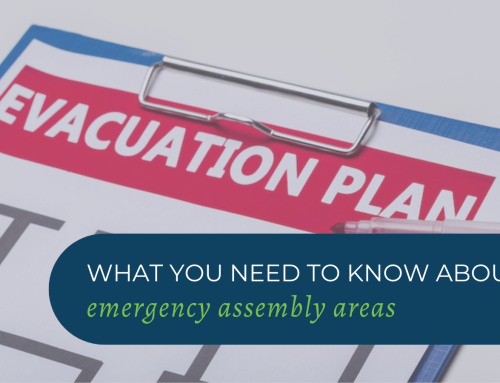Every organisation in NSW, from a small coffee shop to a multiple franchise corporation, is bound by certain Acts and Regulations relating to planning for emergencies in the workplace. How the organisation has undertaken this is documented in an Emergency Plan. Emergency Plans can help to manage an emergency situation and prevent it from becoming a disaster to the workers, customers and business continuity. It is vital to have up-to-date and thorough plans that are routinely maintained to prevent a disaster from occurring in the workplace.
In NSW, all organisations follow the Work Health & Safety (WHS) Act (2011) and WHS Regulation (2017), that was published on 1st September 2017. One of the relevant parts of the Regulation is Division 4; Emergency Plans, Regulation 43: “Duty to prepare, maintain and implement emergency plan.”
SafeWork Australia and SafeWork NSW have both released documents, “Code of Practice: Managing the work environment and facilities”. These documents are a practical guide created to assist organisations in maintaining their compliance with the relevant legislation. There is a direct link from the Code of Practice that references Australian Standard 3475: Planning for emergencies in facilities (2010).
Emergency Plans are tailored to the specific workplace, so all workers have a role in responding to potential hazards that may cause harm. Emergency plans include different types of emergency situations including fire or explosion, dangerous chemical release, a medical emergency, natural disaster, bomb threat, violence or robbery. The Emergency Plan explains how to respond to various types of emergencies, including how to safely evacuate people from the workplace in a safe and controlled manner.
As per Regulation 43, as mentioned above, Emergency Plans must include an effective response to an emergency, evacuation procedures, notifying emergency services, medical treatment & assistance and effective communication. Emergency Plans must also include means of testing these procedures, plus frequency of this testing, and all information and training relevant to the workers in how to implement emergency plans.
So how is this relevant to a workplace? In the last 18 months, businesses have faced unprecedented changes in emergency management and business continuity. As workplaces are moving towards safely opening up and having people working back face-to-face, it is essential that all Emergency Plans are up to date in accordance with current legislation. With everything that is going on around the world, it is easy for businesses to fall behind in maintaining accurate and thorough Emergency Plans to ensure the safety of all workers.
Workplace Emergency Management creates comprehensive Emergency Plans that are site-specific and tailored to all kinds of workplaces including childcare, aged care, retail and warehousing. These Emergency Plans cover the types of emergencies that are most likely to occur in the workplace. Workplace Emergency Management can assist organisations to be compliant to legislation and Australian Standards to ensure the safety of workers, visitors and all occupants of the workplace.
GET IN TOUCH
Are you ready for peace of mind that your workforce is as safe and prepared as possible?
With a dedicated team of staff ready to help you meet compliance requirements and improve the overall safety of your workplace, all you need to do is get in touch.
Request your free audit today!



